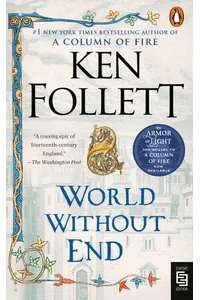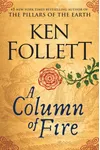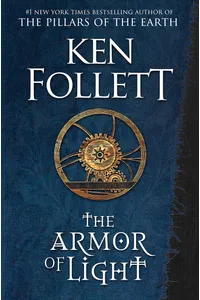Step into the captivating world of the Pillars of Earth, where medieval England comes alive with soaring cathedrals, tangled conspiracies, and unforgettable characters! Ken Follett’s Kingsbridge series, a cornerstone of historical fiction, weaves a multi-generational saga around the construction of a grand cathedral, blending rich historical detail with heart-pounding drama. From political intrigue to forbidden love, this series has enthralled millions with its vivid storytelling.
Whether you’re a history buff or just love a good tale, the Pillars of Earth series offers a time machine to a turbulent era. Let’s explore how this epic began, its core stories, and why it continues to resonate with readers worldwide.
How Pillars of Earth Began
In the late 1980s, Ken Follett, already a bestselling thriller writer, took a bold leap into historical fiction. Inspired by his fascination with medieval architecture and the awe-inspiring cathedrals of Europe, Follett spent years researching to craft The Pillars of the Earth. Published in 1989, the novel was a gamble, but its blend of meticulous history and gripping human stories struck a chord, launching a beloved series.
Follett’s passion for authenticity drove him to study everything from stone masonry to monastic life. His goal? To make readers feel the weight of every chisel strike and the stakes of every betrayal. The result was a saga that felt both epic and deeply personal, setting the stage for the Kingsbridge series.
The Heart of Pillars of Earth
The Kingsbridge series spans four main novels, each a standalone masterpiece set in the fictional town of Kingsbridge. The Pillars of the Earth (1989) follows master builder Tom and prior Philip as they navigate war, corruption, and ambition to construct a cathedral in the 12th century. World Without End (2007), set 200 years later, explores plague and power struggles through the eyes of merchant Caris and builder Merthin. A Column of Fire (2017) leaps to the 16th century, diving into espionage and religious conflict, while The Evening and the Morning (2020), a prequel, unveils the origins of Kingsbridge in the 10th century.
The series shines through its themes of resilience, faith, and human connection. Follett masterfully balances grand historical events—like the Anarchy or the Black Death—with intimate stories of love, betrayal, and sacrifice. The cathedral, a constant symbol, represents humanity’s drive to create beauty amid chaos. With its lush prose and vivid settings, from muddy construction sites to candlelit monasteries, the series immerses readers in a world both distant and relatable.
Follett’s characters, from cunning nobles to determined artisans, feel like old friends (or foes). Their struggles—whether building a spire or defying societal norms—resonate across centuries, making each book a page-turner that’s hard to put down.
Why Pillars of Earth Resonates
The Kingsbridge series has sold millions of copies and inspired adaptations, including a 2010 miniseries and popular video games. Its appeal lies in its ability to humanize history, turning distant events into personal stories. Fans praise Follett’s knack for blending fact and fiction, creating a world where historical accuracy meets emotional depth.
Beyond its commercial success, the series has left a mark on historical fiction, inspiring authors to tackle ambitious, character-driven sagas. Its timeless themes—hope, ambition, and the clash between progress and tradition—keep readers returning, eager to lose themselves in Kingsbridge’s cobbled streets.
- First Published: 1989 (The Pillars of the Earth)
- Number of Books: 4 main novels
- Notable Adaptation: 2010 miniseries starring Ian McShane
- Setting: Fictional town of Kingsbridge, England
Ready to travel back to medieval England? Grab The Pillars of the Earth and dive into a world of cathedrals, conspiracies, and epic storytelling!




